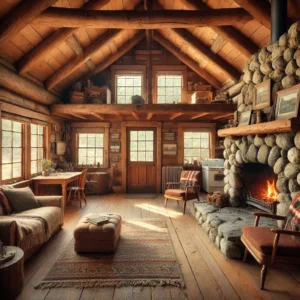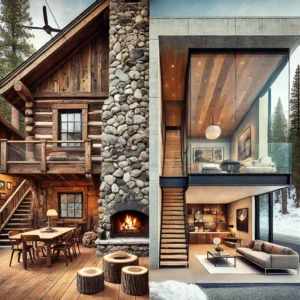Homes with History: Discovering Pre-Resort Properties in Mammoth Lakes

When most people think of Mammoth Lakes, they picture ski slopes, luxury cabins, and mountain condos — and they’re not wrong. But long before the ski lifts began spinning in the 1950s, Mammoth had a different identity — one rooted in mining, logging, and quiet frontier living. Scattered throughout our town are homes that tell stories of that early era, built before Mammoth Mountain Ski Area turned this place into a world-renowned resort destination.
These pre-resort properties are rare, full of character, and offer something that modern homes can’t always replicate: history, craftsmanship, and soul.
A Glimpse into the Past
The area we now know as Mammoth Lakes was once the heart of the Mammoth Mining District in the late 1800s. Though the original boom didn’t last long, small settlements persisted. During the 1920s and 30s, a mix of Forest Service personnel, seasonal workers, and adventurous families built cabins throughout the region — especially in areas like Old Mammoth, Mammoth Camp Tract, and near Twin Lakes.
It wasn’t until Dave McCoy founded Mammoth Mountain Ski Area in 1953 that the modern wave of real estate development began. Before that, homes were built slowly, thoughtfully, and often by hand — using local timber, salvaged materials, and techniques suited to mountain survival rather than aesthetics.
What Makes These Homes Special?
Each of these older homes is a time capsule, offering features that are increasingly hard to find in newer construction:
-
Rustic Architecture: Expect exposed beams, hand-built stone fireplaces, log siding, and classic A-frame silhouettes.
-
Local Materials: Builders often used native pine, granite, and river rock, creating homes that blend naturally into the environment.
-
Larger Parcels: Many older homes sit on oversized lots — something uncommon in newer developments.
-
Simple Floor Plans: These homes were built for function — cozy, compact, and designed to retain heat in brutal winters.
-
True Craftsmanship: Whether it’s carved wood trim or vintage iron stoves, you’ll find touches that speak to a time when every detail was intentional.

Where to Find Them
You’re most likely to encounter pre-resort homes in:
-
Old Mammoth Road area
Some of the oldest surviving cabins are tucked along this historic corridor, often hidden among mature pine trees. -
Twin Lakes & Lake Mary Cabin Tracts
Seasonal cabins dating back to the 1930s still exist in these Forest Service lease areas — often passed down through generations. -
Hidden streets off Main Street
Occasionally, tucked between newer homes, you’ll find an old gem that predates the resort era.
What Buyers Should Know
While the charm is undeniable, purchasing a historic property in Mammoth comes with some unique considerations:
-
Renovation Needs: Plumbing, insulation, and electrical systems may be outdated and require upgrades to meet current codes.
-
Zoning & Permits: Some structures may be “non-conforming” or have grandfathered uses, so it’s crucial to research what renovations are allowed.
-
Insurance & Lending: Older homes may require specialty insurance or pose financing challenges. A knowledgeable real estate agent can help you navigate this.
-
Seasonal Access: Not all historic cabins are year-round accessible — especially those in Forest Service areas with snow closures.
Why Buy a Historic Home?
For the right buyer, a historic home isn’t just a piece of real estate — it’s a living part of Mammoth’s story. These properties offer:
-
A unique architectural style that stands out from cookie-cutter construction.
-
A deeper connection to nature and the past.
-
Potential value as a legacy home, vacation rental with character, or long-term investment.
-
The joy of preserving and restoring something truly one-of-a-kind.
A Local Example
Not long ago, we listed a cozy 2-bedroom cabin near Old Mammoth Road, originally built in 1949. The home still had its original pine floors, a stone hearth crafted by hand, and a roof designed for heavy Sierra snow. Though it needed some updating, it was the perfect blend of vintage charm and mountain soul — and it sold quickly to a buyer looking for authenticity over modern luxury.

Final Thoughts
In a market filled with sleek modern homes and high-end condos, historic properties in Mammoth Lakes offer something deeper — a sense of place, of history, and of craftsmanship that stands the test of time. Whether you’re looking for a project, a cozy getaway, or a mountain cabin with roots, these homes are worth exploring.
If you’re curious about owning a piece of Mammoth’s history — or if you’re sitting on one and wondering what it’s worth — let’s connect. These homes may be rare, but their stories deserve to be told.




